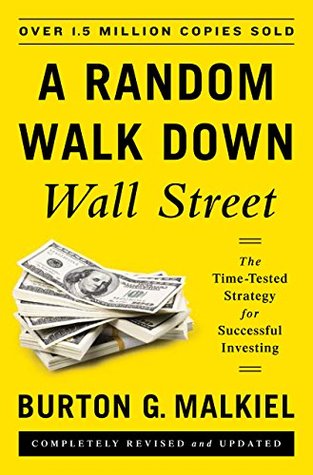More on this book
Community
Kindle Notes & Highlights
Bubbles are particularly dangerous when they are associated with a credit boom and widespread increases in leverage both
When the bubble bursts, the feedback loop goes into reverse.
clear conclusion is that, in every case, the market did correct itself. The market eventually corrects any irrationality—albeit in its own slow, inexorable fashion.
depend upon estimations of the earning power of companies many years into the future. Such forecasts are invariably incorrect.
investment risk is never clearly perceived, so the appropriate rate at which the future should be discounted is never certain.
at any particular time, it is not obvious to anyone whether they are...
This highlight has been truncated due to consecutive passage length restrictions.
NO ONE PERSON OR INSTITUTION CONSISTENTLY KNOWS MORE THAN THE MARKET.
efficient-market hypothesis (EMH) and its practical implication: Stock investors can do no better than simply buying and holding an index fund that owns a portfolio consisting of all the stocks in the market.
Technical analysis is the method of predicting the appropriate time to buy or sell a stock used by those believing in the castle-in-the-air view of stock pricing. Fundamental analysis is the technique of applying the tenets of the firm-foundation theory to the selection of individual stocks. Technical analysis is essentially the making and interpreting of stock charts.
chartists believe that the market is only 10 percent logical and 90 percent psychological.
Fundamental analysts take the opposite tack, believing that the market is 90 percent logical and only 10 percent psychological. Caring little about the particular pattern of past price movements, fundamentalists seek to determine a stock’s proper value.
principle of technical analysis is that all information about earnings, dividends, and the future performance of a company is automatically reflected in the company’s past market prices. A chart showing these prices and the volume of trading already comprises all the fundamental information, good or bad, that the security analyst can hope to know. The second principle is that prices tend to move in trends: A stock that is rising tends to keep on rising, whereas a stock at rest tends to remain at rest.
things the chartist looks for is a trend.
“Prices move in trends, and trends tend to continue until something happens to change the supply-demand balance.”
resistance level. The stock may wiggle around a bit and then turn downward.
chartist is a trader, not a long-term investor.
the crowd instinct of mass psychology makes trends perpetuate themselves.
unequal access to fundamental information about a company.
investors often underreact initially to new information.
also believe that people have a nasty habit of remembering what they paid for a stock,
the price of $50 at which the stock sold initially becomes a “resistance area.”
Each time the resistance area is reached and the stock turns down, the resistance level becomes harder to cross,
A similar argument lies behind the notion of “support levels.”
investors will jump at the chance to buy when prices drop back to the original low level.
support area that holds on successive declines becomes stronger and stronger.
sharp reversals in the market may occur quite suddenly, the chartist often misses the boat.
As more and more people use it, the value of any technique depreciates.
traders tend to anticipate technical signals.
no chartist could get into the act before the whole play is gone.
If some people know that the price will go to 40 tomorrow, it will go to 40 today.
The technician is interested only in the record of the stock’s price, whereas the fundamentalist’s primary concern is with what a stock is really worth.
the fundamentalist’s most important job is to estimate the firm’s future stream of earnings and dividends. The worth of a share is taken to be the present or discounted value of all the cash flows the investor is expected to receive.
security analysts usually specialize in particular industry groups.
valuable insights into factors that are not yet reflected in market prices.
four basic determinants to help estimate the proper va...
This highlight has been truncated due to consecutive passage length restrictions.
Determinant 1: The expected g...
This highlight has been truncated due to consecutive passage length restrictions.
the magic of compound growth!
Take the interest rate you earn and divide it into the number 72, and you get the number of years it will take to double your money.
gets harder and harder to grow at the same percentage rate.
length of the growth phase is very important.
Rule 1: A rational investor should be willing to pay a higher price for a share the larger the growth rate of dividends and earnings.
Corollary to Rule 1: A rational investor should be willing to pay a higher price for a share the longer an extraordinary growth rate is expected to last.
the P/E multiple, not the price, that really tells you how a stock is valued in the market.
Determinant 2: The expected dividend payout.
Rule 2: A rational investor should pay a higher price for a share, other things equal, the larger the proportion of a company’s earnings paid out in cash dividends or used to buy back stock.
Determinant 3: The degree of risk.
less risky stocks, and these stocks can therefore command higher price-earnings multiples
compensation for higher risk must be greater
Rule 3: A rational (and risk-averse) investor should pay a higher price for a share, other things equal, the less risky the company’s stock.
Determinant 4: The level of market interest rates.


